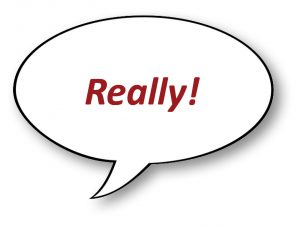
Magnitude of special inspections
…And IBC Chapter 35
How do you determine the magnitude of special inspections on that next project? Is it by reviewing the contract documents or reviewing the “statement of special inspections” for the project? Reviewing both would be a good start BUT this is NOT the final answer if you want to cost and provide all of the required special inspections. You have to know your way around chapter 17 of the IBC code as well as reviewing the applicable reference codes and standards of IBC, chapter 35, “Referenced Standards”.
Preparing special inspection cost proposals or actually providing the special inspections can appear to be relatively simple when using “Table 1705.3, Concrete Special Inspections” or “Table 1705.6, Soils Special Inspection” as presented in IBC chapter 17. The bad news is that MOST special inspections and related tests are not listed in chapter 17 but in a reference code or standard listed in IBC chapter 17 and/or chapter 35. If you are dealing with masonry special inspections, you have to review the masonry code (TMS 402-602) listed in chapter 35 and chapter 21, “Masonry”. If you are dealing with steel decking special inspections, then you may have to review AISC 360 and IBC chapter 22, “Steel” but you will ABSOLUTELY need to review the Steel Deck Institute (SDI) QA/QC 2011/2017 standard and specifically Appendix 1 which lists all of the (SDI) required special inspections for steel decking whether it is welded or utilizes mechanical fasteners and is also listed in chapter 35. If you want to know what special inspections that you must perform associated with the exposure class of concrete, you are going to have to review the concrete code (ACI 318-14), chapters 19 and 26, sections 19.3 and 26.4 respectively. Table 1705.3 of Chapter 17 will allude to these ACI 318 code sections but you have to review the actual sections of ACI 318 to find all of the required special inspections. Similarly, if you are trying to figure out what information the IBC code requires to be included in the geotechnical report or EVEN if the code requires a geotechnical report, it will not be found in chapter 17; all of this important geotechnical information is in IBC chapter 18, section 1803 and to a lesser degree in portions of IBC chapter 16.
While IBC chapter 17 lists most of the major IBC reference codes which are also listed in IBC chapter 35 (along with the appropriate issue date of the reference code edition), you must review the applicable IBC reference code to establish what special inspections are required. If the code requires special inspections that are NOT required by the contract documents, the CODE takes precedence! Every project must comply with the MINIMUM requirements of the general building code (Statewide + IBC).
IBC Chapter 35 – Referenced Standards
Once a code or standard is incorporated into the IBC code through the code development process (listed in Chapter 35), it becomes an ENFORCEABLE part of the IBC general building code. When the IBC code is adopted by a jurisdiction, the reference code or standard is also a part of that jurisdiction’s adopted code.

But Wait, We Have a Lot More to Say!
CODE issues got you cracking up? For a complete picture of the Code and how it relates to Special Inspections, F&R would love to provide an AIA accredited Lunch & Learn presentation to the professionals at your firm. Contact Alan Tuck for more details at: atuck@fandr.com


